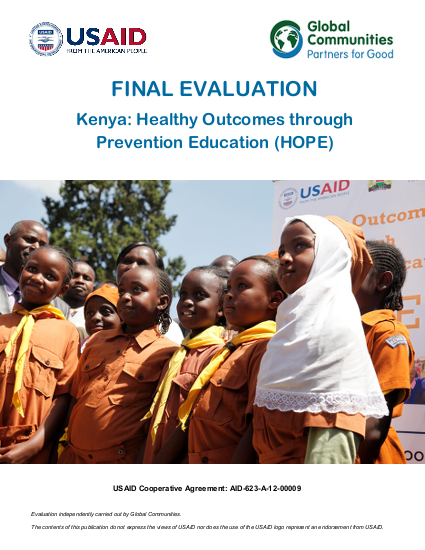Final Evaluation

In Kenya, high poverty, insecurity, poor health outcomes, substance abuse and low levels of education make young people, especially girls, vulnerable to a variety of risks such as Human Immunodeficiency Virus (HIV) infection, Acquired Immunodeficiency Syndrome (AIDS), other Sexually Transmitted Infections (STIs) and Diseases (STDs), and Sexual and Gender-Based Violence (SGBV). To help address this crisis, the Healthy Outcomes through Prevention Education (HOPE) Program was designed to help prevent the spread of HIV/AIDS, STIs and STDs, and generally promote healthy outcomes among at-risk Kenyan students and their families. The HOPE Program was funded by the President’s Emergency Plan for AIDS Relief (PEPFAR) through the United States Agency for International Development (USAID), from March 2012 through June 2015. HOPE was implemented by Global Communities (GC) in partnership with the National Organization of Peer Educators (NOPE), Kenya Girl Guide Association (KGGA), St. John’s Community Center (SJCC) and Support for Addiction Prevention and Treatment in Africa (SAPTA). The program was implemented in Nairobi and Kiambu counties, and tasked with reaching at-risk youth in informal urban settlements. This report presents the findings of a summative end-line program evaluation funded by Global Communities and carried out in the summer of 2015.